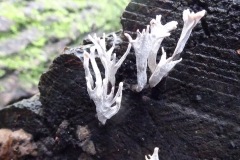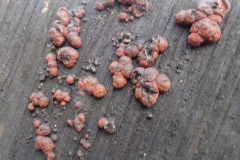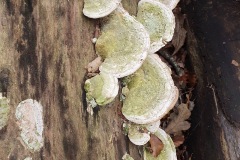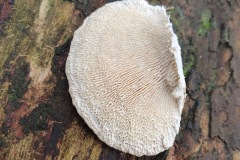Fungi in Sandall Beat Wood December 2023
Several fungi included in this Blog have been identified by Kevin Gilfedder but only from a
photograph so in some cases the identification is only a probability. Kevin pointed out that extra
pieces of information as well as a photograph are helpful when attempting an identification.
They include:
the substrate on which the fungus is growing,
a photograph of the underside,
whether or not the flesh bruises when pressed and if so what colour it turns
and any particular smell.
Here are two more examples. The first an easily recognisable fungus called Candlesnuff Xylaria
hypoxylon which is very common and found on broad-leaved trees and the second a red slime
mould called Lycogala epidendron in its fruiting stage ready to shed spores. ( identified by Kevin )
Kevin directed me to the genus Trametes for this next fungus and initially we weren’t sure whether
it was Trametes pubescens or Trametes gibbosa , which is more common than the former.
Apparently many of the brackets develop algae on their upper surface so that feature wasn’t very
useful in determining which species it was. Fortunately I took Kevin’s advice and photographed
the underside which clearly showed the irregular, elongated maze-like pores which distinguish
gibbosa from other species of Trametes which have round or oval pores.



